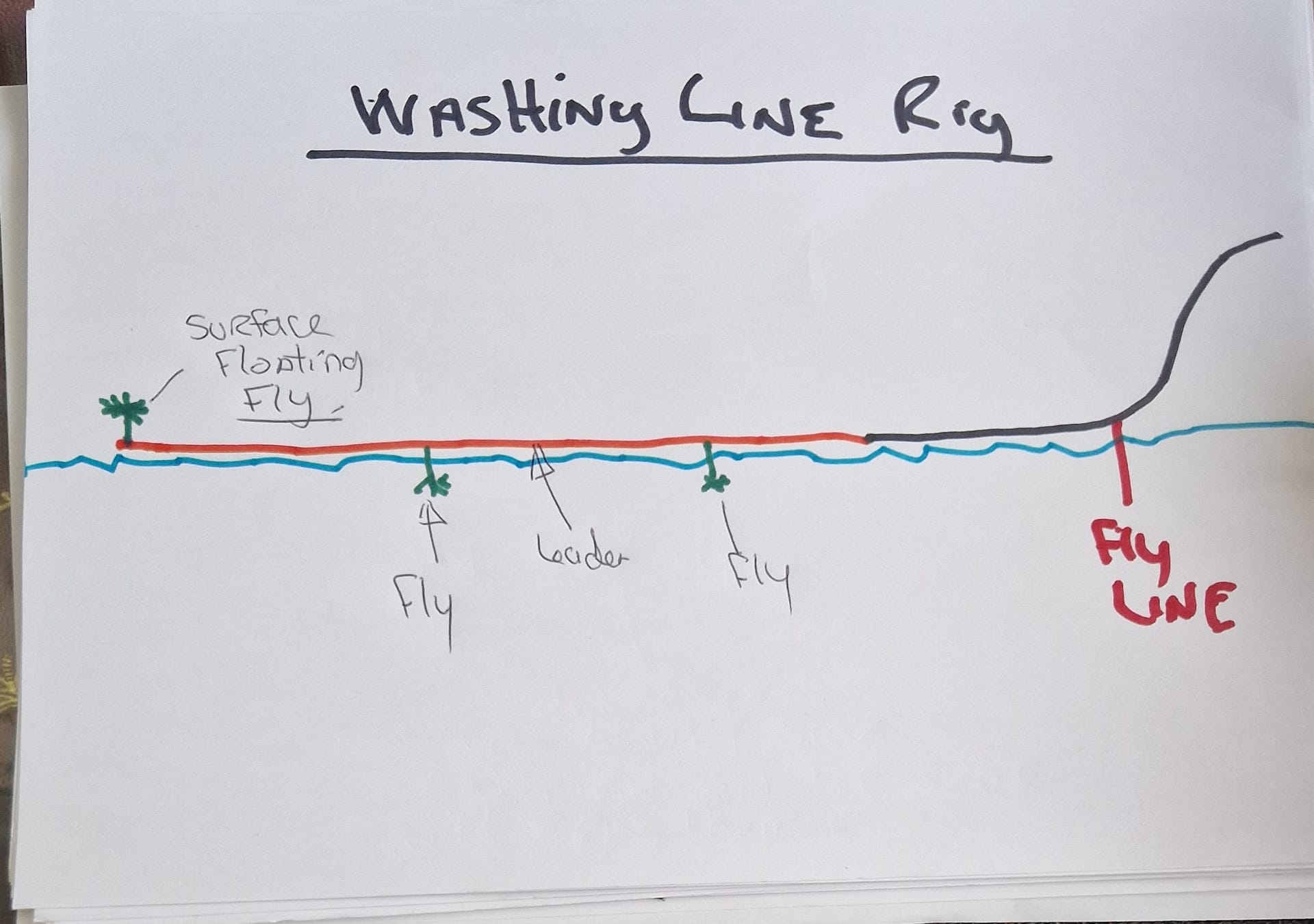
Mastering the Washing Line Method in Trout Fly Fishing
If you’re looking to up your game in trout fly fishing, the washing line method is a must-know technique. This innovative approach is a favorite among anglers for stillwater fishing, helping to cover different water depths effectively. Whether you’re targeting stocked fish or wild trout, the washing line rig can significantly increase your success rate.
What Is the Washing Line Method?
The washing line technique involves using a buoyant fly (such as a booby or a deadly popper) on the point, with nymphs, buzzers, or diawl bachs positioned on droppers. This setup allows the angler to suspend multiple flies at different depths, imitating natural insect movement in the water.
Why the Washing Line Fly Fishing Method Works
Trout often feed at various depths, and this method keeps your trout fly patterns in the strike zone for longer. Here’s why it’s so effective:
Covers Multiple Depths – The floating point fly keeps everything suspended naturally, allowing for a slow, enticing presentation.
Works in Various Conditions – Whether fish are near the surface or deeper down, the washing line fly setup adapts to different feeding levels.
Imitates Natural Insect Behavior – The slow sink of nymphs and buzzers mimics emerging insects, a key food source for trout.
Prevents Snagging – Since your flies are presented off the bottom, this method reduces the risk of catching debris.
Choose the Right Flies – A buoyant fly like a booby or FAB on the point, paired with buzzers, crunchers, or diawl bachs on the droppers.
Use a Floating or Midge Tip Line – This helps maintain a controlled depth for the droppers while keeping the point fly suspended.
Slow Retrieve or Static Approach – A gentle figure-eight retrieve or allowing the flies to drift naturally often yields the best results.
Adjust Leader Length – Depending on the water depth, extend or shorten your leader to keep the flies in the feeding zone.
Best Conditions for the Washing Line Method
Clear and Calm Waters – Allows for precise presentation.
Spring and Summer – When trout feed heavily on buzzers and midges.
Shallow or Deep Reservoirs – Perfect for targeting cruising trout.
Overcast Days – When fish are feeding just below the surface.
Why You Should Try the Washing Line Technique
The washing line fly fishing method is a game-changer for any angler wanting to target trout in stillwaters. It’s an incredibly effective way to imitate natural food sources, cover more water depths, and entice strikes from selective fish. Whether you’re new to fly fishing or an experienced angler, mastering this technique will help you catch more trout consistently.
So next time you’re on the water, give the washing line setup a try—you might just land your personal best trout!
Tight lines and happy fishing!
